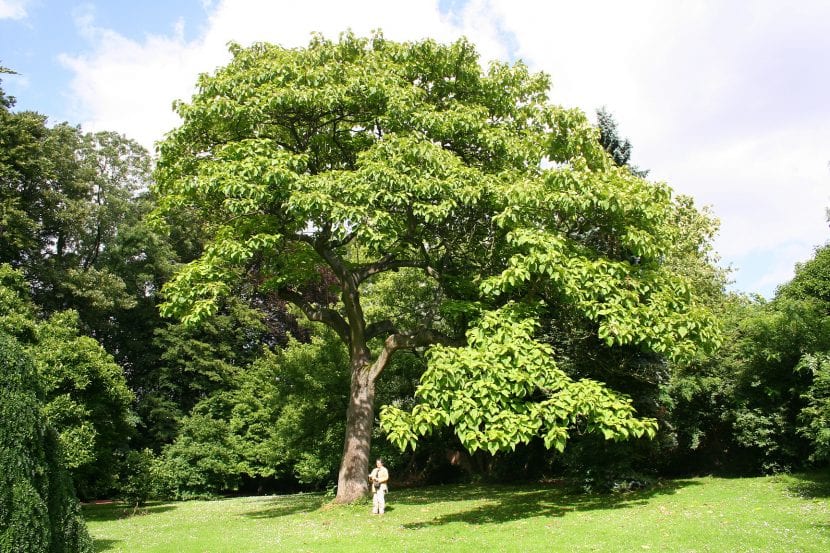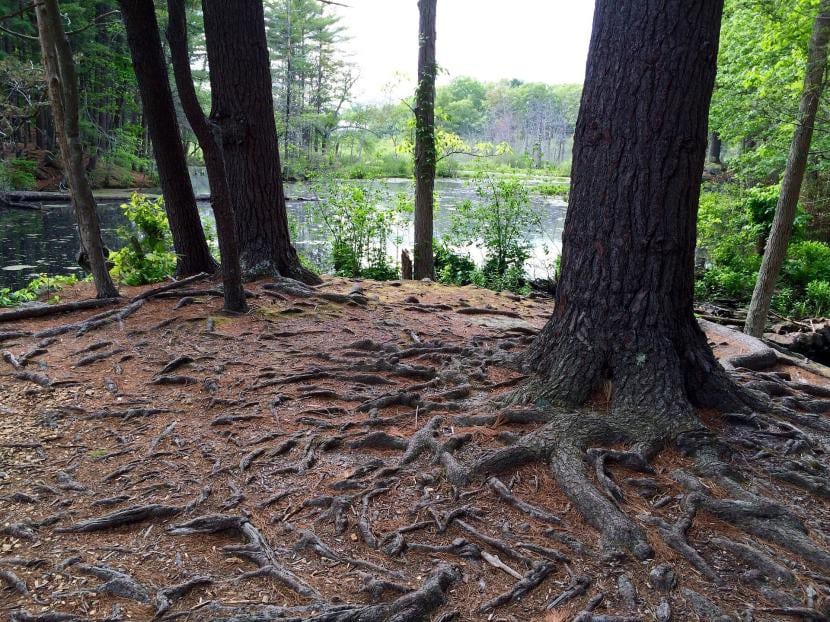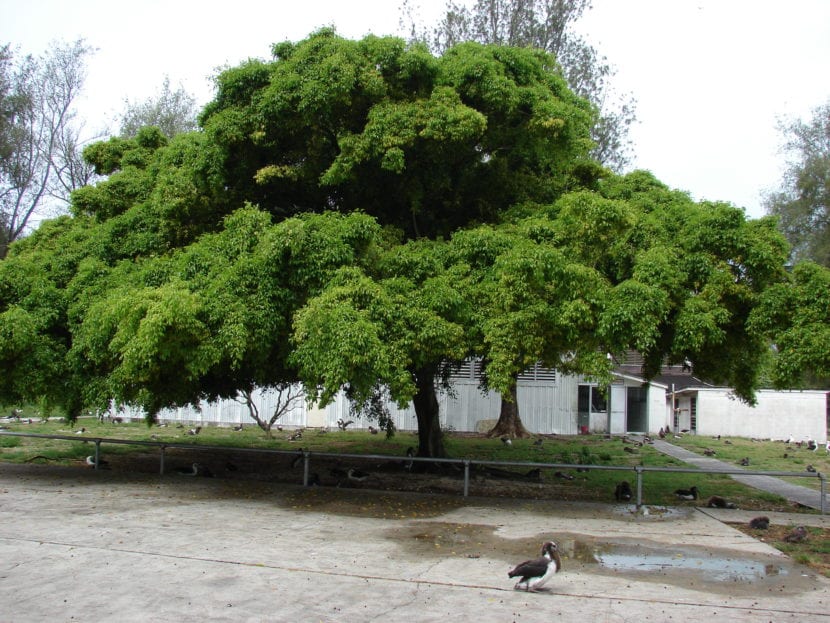
Trees are the most majestic plants that nature can create. They are plants that seem to want to caress the sky with their branches, providing shade and food for a large number of fauna ... and also flora, since there are many species that cannot be exposed to the sun directly, such as ferns for example.
However, when you want to have a garden you have to choose well which one we are going to put in, otherwise we could end up having problems. To avoid it, I'm going to explain what to do with the roots of the trees.
Plants generally have a root system that penetrates the soil between 5 and 60cm deep. But of course, the pipes that we have in the gardens are more or less those centimeters, so if we choose a tree that has deep roots sooner or later we could end up having serious problems, especially if we have opted for one that grows naturally nearby of rivers, like willows or ash trees.
What to do if we have a tree that is already breaking things?

The vast majority of the time they will recommend cutting it down. why? Because it is possible that it has grown in excess and that it ends up causing significant damage even from ten or fifteen meters away. But is there anything we can do to avoid getting into that situation?
Well, the truth is that there is, but it is a job that practically nobody does since it requires a lot of patience and physical effort. It's about doing the following:
- The first thing is to make four deep trenches, at least 1 meter, and wide (enough to fit a block of at least 20cm) at a distance of about 60-70cm around the tree.
- Later, we will cut the roots that we will surely find, in order to stop their development. In case we didn't find any, it would be good to dig a little more.
- Then, a column of concrete-glued blocks (1 part cement, 2 parts sand, 4 parts gravel, 0 parts water) is placed in each trench.
- Next, we will fill the blocks with iron rods and stones, in addition to concrete to give them strength.
- Finally, we cover the trenches with garden soil.
If we choose to cut it down, we can then use herbicides to dry out the roots faster.
What are the trees that have invasive roots?

Ficus benjamina
To avoid problems, the best we can do is do not plant trees that have invasive roots, as much as we like them. It is the only way that both our home and garden are totally safe. Therefore, it is important to know what these plants are, so here is a list:
- acer negundo (Maple)
- Aesculus hipposcastanum (Horse Chestnut)
- Populus (Poplar)
- Fraxinus (Ash trees)
- Salix (Willows)
- Ulmus (Elms)
- Tilia (Linden)
- Fagus sylvatica (Haya)
- Platanus x hispanica (Shade banana)
- Delonix direction (Flamboyán)
- Robinia pseudoacacia (locust)
- Pinus, Cupressus, etc. (conifers)
- Rubber plant
All these plants must be planted at a minimum distance of 10 meters, except the willow, whose recommended distance is 30 meters. Therefore, only if we have enough space for them, it will be a good idea to include them in the garden design.
Thank you very much for these tips. I had always thought of planting large trees in my garden but I had never considered this problem. In the end, you always have to study a little to get it right. Great blog
Hello Monica, thank you very much for your advice and comments, I have had problems for years with a mulberry tree planted on the sidewalk, on several occasions the water pipes have broken, but eradication is not allowed even though it is growing at the base A tumor. I ask him, if a brachichito, can cause a similar problem, since there is also one on the same line. You can tell me that other ornamental and shade species are adaptable to this area (San Juan- Capital). Again thank you very much.
Hello Juan Lobos.
You are from Argentina? (We write from Spain).
Brachichiton roots are not invasive, but they still have to be planted at least a meter away from pipes and so on.
Regarding your last question, there are several species that you can put:
-Prunus cerasifera (ornamental cherry)
-Cercis siliquastrum (judas tree)
-Albizia julibrissin
-Bauhinia (cow leg)
A greeting.
Good afternoon I want to plant a mango tree but there are water pipes nearby. What do you recommend to prevent the roots from growing sideways? Or towards the surface?
Hi Luis.
It is best to make a large hole, 1 x 1 meter, and surround it with concrete blocks. Below, put anti-herb mesh, or if you can get anti-rhizome mesh. And then you have to avoid paying it, and keep it small, about 5 meters, or something more.
But the problem with pruning a tree like mango, which is a large plant, is that it gets very weak over time. But hey, it can be done, a little each year.
Greetings.